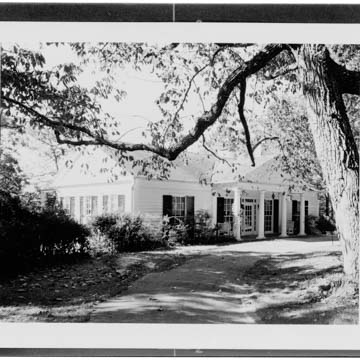Franklin Delano Roosevelt first traveled to Warm Springs, Georgia, in 1924. Two years later he purchased a 1,200-acre resort property there to establish the Warm Springs Foundation, where polio patients could seek treatment. Architect Henry J. Toombs, who built most of the rehabilitation center’s facilities, also constructed two residences for Roosevelt. The first, built in 1926–1927, was where Roosevelt stayed during his earlier visits to Warm Springs, until he sold it to Leighton McCarthy, Canada’s ambassador to the U.S. during World War II. The second residence was built in 1932. Called the Little White House, it is a single-story, plain Colonial Revival constructed of Georgia pine. Toombs expanded the residence in 1932 with a detached garage/servants’ quarters, a guesthouse in 1933, and the Georgia Wilkins Cottage in 1934, the latter converted to a museum by Toombs in 1959. The Little White House was originally approached from the cottage area of the rehabilitation center via an unpaved road; it was more secluded than it is today. It was at the Little White House, while sitting for his portrait, where Roosevelt suffered a stroke in April 1945 and died shortly after.
References
Charlton, James H., “Warm Springs Historic District,” Meriwether County, Georgia. National Register of Historic Places Inventory–Nomination Form, 1980. National Park Service: U.S. Department of the Interior, Washington, D.C.














